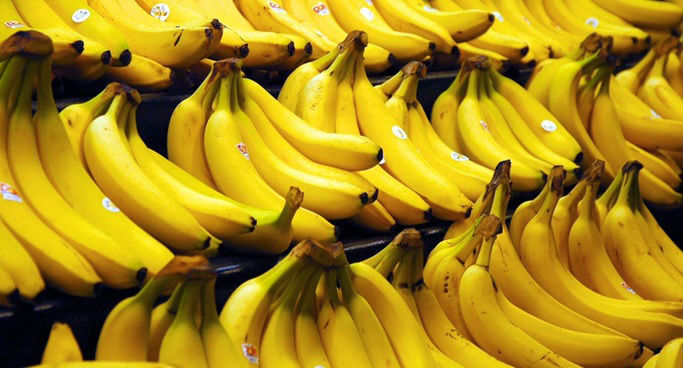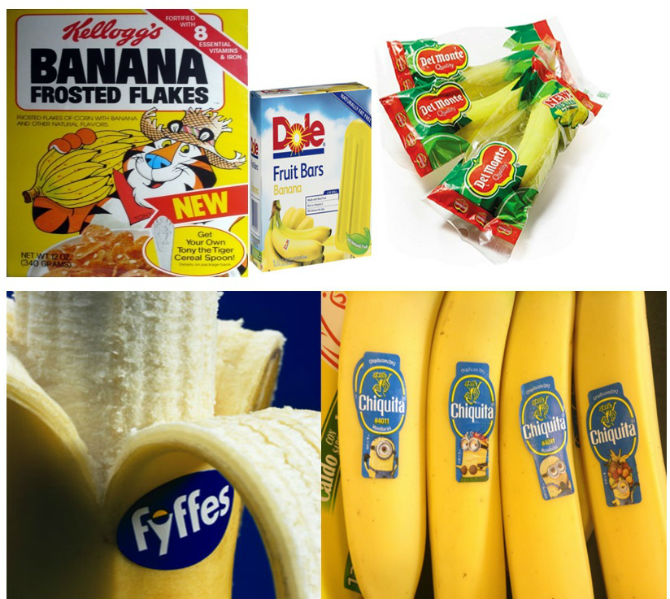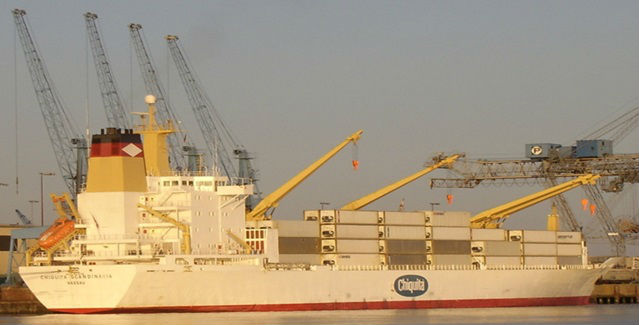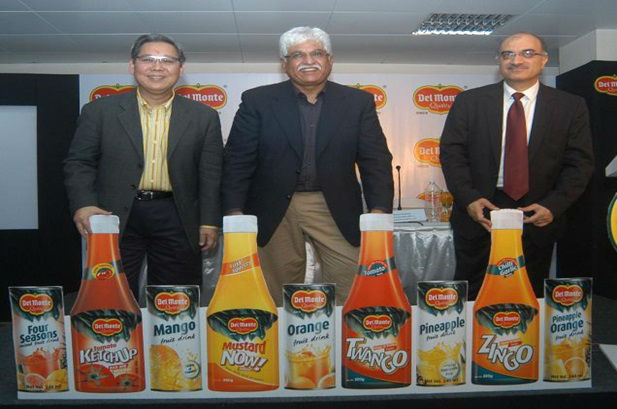 During the first phase of lockdown owing to Corona, “a farmer in Madurai distributed ripened bananas to his neighbourhood for free of cost as he couldn’t sell it” this news went viral in media. This same plight was experienced by farmers of Theni district before a year. Banana which sold for rupees 12-17 per kg formerly, now fell to rupees 2! But retailers are not coming forward to buy even at this cost! Bananas which were grown in thousands of acres are wasted as it ripens and perishes in its bunch itself. Distressed farmers pared the banana crops with the hands which planted it. This sharp fall in the prices of banana prevailed for a year.
During the first phase of lockdown owing to Corona, “a farmer in Madurai distributed ripened bananas to his neighbourhood for free of cost as he couldn’t sell it” this news went viral in media. This same plight was experienced by farmers of Theni district before a year. Banana which sold for rupees 12-17 per kg formerly, now fell to rupees 2! But retailers are not coming forward to buy even at this cost! Bananas which were grown in thousands of acres are wasted as it ripens and perishes in its bunch itself. Distressed farmers pared the banana crops with the hands which planted it. This sharp fall in the prices of banana prevailed for a year.
Rupees 150 is spent to grow a banana plant for 11 months. Manikandan, a tenet farmer from Theni district, says that 1.50 lakhs is spent for a year for 1 acre, 4.50 lakhs was spent for 3 acres but sold it only for two lakhs. Remaining 2.50 lakh debt was being cleared by wage works. Falling of rates is not an exception that happens only during the period of Corona. Banana plantation farmers are facing this situation at least once in two years!
What is the reason for the falling of prices?
Our horticultural department officers will have two answers readymade for this question. A reason which is said usually is “farmers plant more bananas in order to get more profit, and this leads to the excess production, i.e., banana cultivated exceeds current demand, and when the supply is more than the demand, the price falls.” Else rain, flood and transport restrictions are to blame in the districts and states where banana is cultivated in abundance. We cannot expect any answers other than these two, but retailers put this in another way.
Trading of banana takes place in two categories viz., domestic market and export market. The domestic market depends on metro cities and industrial towns. Cyclones, rain, floods do not occur regularly, it happens once in a while. So export orders determine the prices of domestic markets. Price falls when the need for export decreases and so it’s not in our hands, say banana retailers!
If asked, farmers tell that they are cultivating tissue culture bananas as officers assured that they would get more profit by exporting it. Retailers come to us with fixed market prices. The least we do is, try to add one or two rupees to the market price told by the retailer. Apart from this, we do not know who exports and the actual rate of banana.
When inquired, is there any farmer who directly exports in the district? The answer is no, always. Instead, we come to know that two big retailers are procuring more from farmers of Theni district and other small retailers are also procuring from the farmers and selling it to the above mentioned big retailers.
We cannot be able to validate that these big retailers are directly in contact with export companies. But these two owns a refrigerated warehouse in Chinnamanur with the help of the horticultural department. In this, A.P. Karuppaiya was the president of Tamilnadu banana growers association! Horticulture department has uploaded the video of A.P. Karppaiya as the pioneer of banana cultivation in Tamilnadu! Most of the farmers were unaware of the state of the export market and its price. This encoded information is decoded only to department officers and big retailers.
Is it true that farmers are greedy? Why are export companies not procuring directly from farmers? Why are the farmers not benefited from export farming? What are the contributions of government and government officers in this? Let’s try finding answers for these questions and share the information we get.
India’s banana farming and export:
India is the largest cultivator of banana in the world. India produced 29 million ton of banana in 2018 from 8, 40,000 hectares of banana farming. Tamilnadu stands first in state level by contributing 43.20 lakh ton banana productions in one lakh hectare. Maharashtra and Gujarat stand next to Tamilnadu. Only 0.5 % of total production is exported, and the remaining is being sold in the domestic market. Leading export countries are Philippines and Equador, which is in 8th and 10th place in the world’s production of banana.
As per the statistics of APEDA India exported, 1, 01,314 tons in 2017-18, 1, 34,503 tons in2018-19, 1,95,745 tons in 2019-20. Even though the figure of weight is big, its transaction value is 348.77 crore, 412.09 crores and 658.57 crores only. India exports 70% to Arab countries and exports to countries like England, France is considerably less.
World’s largest banana importing countries are America, European Union, and Japan. 70% of exported bananas were consumed by these three countries. But India has not exported to these countries. Arab countries in central Asia serves as an important market for India!
Worlds total value of banana export is 2.33 crore ton in 2018. In this, Ecuador backs first place with 24.7%. India, which is the largest producer of banana in the entire world, stands at 20th place in exports!
Let’s see the story of the banana zone- Theni district:
Monoculture zones:
The agricultural policy released by the central agricultural department in 2005 advocates that importance should be given to specified crops which grow well as per the climatic conditions of the region. This would increase the maximum yield of the crops. Based on this system in Tamilnadu, government categorized places as follows:
Tanjavur, Thiruvarur = Paddy zone
Kovai, Erode = Vegetables and coconut zone
Dharmapuri, Hosur = Mango and flower zone
Theni = Banana zone
In these zones, virulent seeds were given for the committed crops, new farming techniques, special subsidy schemes were introduced, and government also advertised and conducted exhibitions and elaborately campaigned among farmers through the horticulture department. (It’s a separate story that these monoculture zones were created on the interest of MNC’S which involved in this agricultural trade!)
Former central trade and commerce minister, Jayaram Ramesh who came to National Banana Research Centre in Trichy in 2007, said that “India is the largest producer of banana in the world. We export only 0.5% of bananas out of 2 crore ton productions, so the central government has planned to increase the export to 5% within five years”.
Following this, the National banana research company (NBRC) recommended virulent GRANDNINE – G9 banana breed imported from Israel as a suitable breed for exports. Private Companies like Jain, Godrej, Reliance, Spic, and Ace sieged Theni district with their tissue culture saplings as if they were expecting this to happen!
Who triggered avarice among farmers?
The government introduced G-9 (Grandnine) variety of banana to farmers who formerly cultivated only the domestic varieties such as Robusta, Rasthali, Karpuravalli, Poovan, Monthan! Government and horticulture department campaigned like “16 combs in one hand, 250 bananas, 55-65 ton yield per acre, drip irrigation would save the cost spent on labors, and a good price as there is great demand which enthralled the farmers”.
Subsidies and compliments were given to people who favour them like A.P. Karuppaya and Pandi and so on and made them to cultivate G-9 variety of banana. Horticulture department praised them like; here comes the pioneer who gained 2 lakh profits in one acre! See the potential of virulence in its yield and even awarded them and advertised this event among farmers! As a next step, they were made to open refrigerated warehouse by giving them lakhs as subsidy.
The commissioner of the department of agricultural production Sandeep Saxena who came to Theni in 2013, insisted that “tissue culture bananas cultivated in 6000 hectares should be increased to 10,000 hectares!”
Prior, “one sapling was sold at the rate of rupees 12, 1.50 lakhs was spent per acre so even the small farmers who hesitated first started banana farming leaving the usual farming. In this, major contribution belonged to companies which sell tissue culture saplings. These companies, in order to increase their sale, brainwashed the farmers to plant banana. They also triggered the brokers by giving them commission of rupees one per plant. Following this, helping banana farmers to avail bank loan, setting up drip irrigation and visiting the fields to give advice about maintenance are the services undertaken by these companies. Horticulture department officers played a major role behind all this.
Its government and officers who provoked the farmers to cultivate G-9 variety, but they blamed the farmers that “they are greedy and planted more than the need which is the reason for fall of prices”. It’s true that yield area has increased, but tissue culture sapling companies and brokers who were commissioned by these companies were the reason for it and not the farmers!
G-9 Banana and the state of the international market:
G-9 banana was given significance in the world market because of its attractive golden yellow color, sweetness as wished by Americans and Europeans, aroma and presence of flour nutrients which is required for making jam, juice, wine, brandy, salad, ice cream etc. as it satisfies and matches the needs of the international market.
 In the international market, Grandnine banana is popularly called as Chiquita. Chinquita was the name of an American company which dominates the world’s banana trade! This company is functioning in 70 countries, with 20,000 employers and owns 20 cargo ships. This company controls 50% of the world’s banana trade! Its annual income is 15,000 crore rupees! Since 2014, this company collaborated with Feffes (a European company which controls 81% of European trade) and now functioning as Chiquita-Feffes in Joint Venture.
In the international market, Grandnine banana is popularly called as Chiquita. Chinquita was the name of an American company which dominates the world’s banana trade! This company is functioning in 70 countries, with 20,000 employers and owns 20 cargo ships. This company controls 50% of the world’s banana trade! Its annual income is 15,000 crore rupees! Since 2014, this company collaborated with Feffes (a European company which controls 81% of European trade) and now functioning as Chiquita-Feffes in Joint Venture.
Fairly nine crore tons of banana is produced in 120 countries of the world! Its trade value is 7 billion dollars! 52,500 crore rupees India’s currency value! Statistics says that its trade value is nearly 1.25 lakh crore including value-added goods!
In the international export market, 1.70 crore ton in 2017, 1.93 crore ton in 2018, 2.33 crore ton banana in 2019 has sold. (In this, India’s contribution didn’t exceed 2 lakh ton until 2019-20!).
80% of this magnanimous world market was controlled by multinational companies like Chiquita, Dole, Del-Monte, Feffes, and Noboa. These companies have cultivated G-9 bananas in thousands of acres in countries like Nicaragua, Colombia, Honduras, Costa Rica, and Cameroon. For instance, Noboa Company has cultivated G-9 banana in 18,000 acres in Ecuador.
In order to transpose the cultivated products, these companies own air-conditioned cargo ships, preserved warehouses, and chain series outlet. Ironically, Modiji is advising the farmers to gain “double profit” by trading with these MNC burglars as on the other side our farmers are fighting hard to cope up with local dealers!
 (Chiquita cargo ship)
(Chiquita cargo ship)
Crisis of the world’s banana market:
The severe crisis is happening in the world’s banana trade market in the past few years.
- Trade unions are strengthening and asking for salary hike and job security in Countries where MNC’s does farming directly. Because of this, these companies are pushed to increase the salary and allowances to their employers.
- In monoculture zones, because of planting the same crops, again and again, G-9 banana was affected by TR4 virus and Black Sigatoka, which affects productivity. Scientists call these diseases as “Aids of Banana” as it cannot be eradicated. This erased the idea of increasing the area of cultivation.
- MNC’s are compelled to decrease the procurement price of banana due to the trade competition of international chain series outlets like Wal-Mart.
- Export expenditure is increasing to 70 to 100% in these five years in countries like Ecuador, Brazil, and Colombia. For example, the production cost of one-ton banana in Ecuador was 26.20 dollar in 2002, but today its 255.30 dollars. Same way, in Brazil, its 66.80 dollars then and 630.60 dollars now.
Because of the above-mentioned reasons, export companies left direct farming methods and started to procure through domestic dealers for very low price, and by fixing contract with the farmers. By this way, their style of trade was changed.
India is an elixir to these companies as they were searching the area for yield with less cause of disease. Because India is not only the largest producer of banana but also very less production cost compared to other countries. “For one ton of banana, its production cost is 126.70 to 133.04 dollar in India. (I.e. production cost of 1kg of banana is just 9.50 rupees!) So here they can procure for 35 rupees per kg in wholesale business” says world banana forum! This is the foremost reason for multinational banana trade companies focusing India.
India’s banana export dream! – But… For whom?
Iran, Oman, Turkey, Arab countries serve as an important market for India’s banana exports. India has not exported to huge markets like Europe and America! Even the deserved companies are not ready to take any efforts. Because on the one side, India does not have any enhanced internal structures like other competitive countries and on the other side, the basics of our agricultural system itself hamper.
For the question, why did Reliance Fresh didn’t engage in banana export trade? Answers M. Ramaswamy, CEO of banana trade branch that “farmers those who own less than 5 acres are more in our country. The market is influenced by domestic traders, and farmers do not believe distant traders. So, MNC’s are reluctant to trade in India”. And “because of this, we have signed contract separately with 2000 banana cultivators for our Reliance Fresh”.
 (Del Monte – Bharti enterprises tie-up)
(Del Monte – Bharti enterprises tie-up)
Three things that block the independent trade of MNC’s in India are 1). Small land ownership issues. That is, people who own less than five acres are more in India. 2). Simple production depending upon domestic market 3) A mutual trust market, which includes small scale farmers and domestic retailers. MNC’s cannot step into India without destroying these! (This is the truth behind Reliance officer’s saying)
Our agricultural system policies are being reformed in order to accomplish this! As a part of this, our Modi government is refining and executing systems like “farmers production organization (FPO), allowing private companies to procure food grains and to garner the desirable amount of grains, “contract agricultural law”, “new livestock breeding act”, and “e-NAM market” system.
For instance, the Agricultural Marketing Board of Maharashtra government has created banana farmers’ co-operative society called “Mahabanana”. In this, along with 8000 farmers, 26 co-operative associations have merged. This association is sending nearly 15,000 containers of banana per year. A special train connecting Jalgaon of Maharashtra to Azadpur of Delhi was executed for this purpose.
John Pennycuick Farmers Trust was created with 256 farmers in Kambam region. Horticulture department is guiding these farmers to cultivate banana in their 1,500-acre land for export purpose! Government is planning to create a platform for multinational companies to procure in wholesale rate by extending these associations.
Apart from this, American company Dole is directly involving in trade with Maharashtra’s banana cultivators association! Del-Monte has tied up with India’s Bharti Enterprises.
India’s agricultural policy is nothing but WTO’S directive!
“Proscribe the subsidies of domestic production! Give importance to exports! To let the market to function without the interference of government!” says GATT treaty! So the World Trade Organization is enforcing to reform the internal laws as per the free market economy. The Indian government is altering its policies as per the desire of its master! And that’s why it’s showing apathy towards the catastrophe of farmers!
India has exported 1, 95,745 tons of bananas in 2019-20. Horticulture department is claiming that G-9 banana yields 55 ton per acre. As per this, nearly 5000 acre is enough for exports. But the government is setting a target to increase the yield area by 25,000 acres so that bananas can be produced more than the demand and the price will fall eventually when supply increases! The government also paves the way for export companies to procure in lesser rates.
It is an absolute deception that export leads to “double profit” for farmers as said by Modi government. Experienced farmers say that “its profit only if it exceeds rupees ten. If it is sold for rupees ten, we can just take back the invested money. If the price falls below rupees ten, then the loss is confirmed”. Theni district G-9 banana farmers got only eight to twelve rupees for the past five years! Out of this, they got only two rupees profit per kilo, excluding the production cost! But retailers who procure from farmers are selling for rupees 35-55 per kg! Export companies sell for rupees 120-150 to Arab countries! This is what farmers gained from export agriculture!
On the other side, instead of a nutritious variety of bananas which is available easily for cheaper rates, now G-9 banana is gaining economic importance. Corporate entities like Reliance are selling bananas for higher rates by branding it. Banana is not available for lesser than rupees 7 to 10 even in our village petty-shops. In this scenario, if companies like Chiquita, Del-Monte, Dole steps in India’s banana trade, the banana will become a luxurious food undoubtedly!
New export farming like Jatropha curcas, Cocoa, Palm oil is imposed on farmers! Farmers are following the officers by believing their words that they would earn more profit. In this race, every time when farmers face loss, government and officers are hiding behind by blaming farmers itself! The vulnerable state of farmers is not changing even when any political parties and government comes to power. And farmers are further pushed to dangerous circumstances.
Farmers, who think out of box and agriculturalist associations should decide that How to rise again from this toxic situation? What can be done?!
Written by Theni Maran
Translated by Maruvarthini P

